- Home
- Paula Byrne
The Adventures of Miss Barbara Pym Page 2
The Adventures of Miss Barbara Pym Read online
Page 2
Irena was an avid reader and fond of music. She played the organ at the parish church of St Oswald’s and she and Fred belonged to the Oswestry Operatic Society. She was also an active member of the parish and the local Women’s Institute. A practical person, in many respects Irena was the epitome of the ‘excellent women’ that would be at the core of her daughter’s novels. She loved to compose doggerel, was a good mimic and had a good sense of humour – a trait she passed on to her clever, lively daughters. She had a font of maxims and favoured quotations, which afforded the girls much amusement. ‘It is hardly worthwhile dividing a cherry’ was one of her sayings. And she would often quote from hymns: ‘God works in mysterious ways’ was a favourite.[4]
On cosy evenings, when the family were at home, together with their two cats sleeping in a chair, Irena would declaim: ‘Behold how good and joyful a thing it is, brethren, to dwell together in unity.’ At other times she would burst into song or quote from Walter Scott. More crucially, in terms of her influence on Barbara, she delighted in fabricating stories about people and their lives: ‘See what you can find without asking’, was one of her maxims.[5] She was sporty – a keen hockey player as a youngster, and later turning to golf – a trait she passed on to Hilary, who also played hockey. Barbara, however, was not fond of physical exercise, preferring to read, scribble stories and pick flowers in the garden for her bedroom.
Barbara loved family jokes and nicknames: Irena was ‘Links’ – a reference to her love of the golf links; Frederic was ‘Dor’ and Hilary was Poopa; and she was ‘Buddy’. Barbara was extremely fond of and protective of her little sister, her mother often having to scold her, ‘What are you doing to Hilary? Put her down.’ When Barbara was sent to boarding school aged twelve, Hilary would spend the whole day at the gate waiting in the hope that she would return.[6]
The Pym sisters were close to some young cousins in Hatch End, London, who would come to stay at Christmas and Easter. Hilary recalled sugar mice adorning the Christmas cake and celluloid animals in their stockings. At the age of eight Barbara wrote an operetta called ‘The Magic Diamond’, which she and her cousins performed at Morda Lodge in 1922.
The Pyms were closely connected to the local church: the girls were friends with the vicar’s daughter, Audrey Brown, and they enjoyed Christmas parties at the vicarage. The family would make a habit of inviting the young curates of the parish to tea. Hilary recalled how she fell in love with a handsome young curate when she was fourteen: during a chat with Irena, he had crossed his legs, revealing white combinations under his cassock. This would form the opening of Barbara’s first published novel, Some Tame Gazelle. It was the kind of detail that the Pym sisters loved; jokes about underwear – ‘combinations’ for men and ‘trollies’ for women – were always good value. They were a religious family, but they were never prudes.
The Pyms were typically respectable middle class and had a small entourage of staff: a gardener and several maids – Sarah (who also acted as a nursemaid to the girls), Leah, Emily, Dilys and Marjorie. Two of the maids lived in, occupying tiny candlelit attic rooms (there was no electricity on this floor of the house). The Pym girls were encouraged to help out with household chores, polishing and washing up, but much of the family’s life depended upon domestic service.
In her diary, Barbara remembered how ‘boring’ she found it to show fifteen-year-old Marjorie around the house: the girl’s fate as a live-in maid would never be her own. Servants would crop up in Pym’s early novels, written during the 1930s, but that changed, as so many things did, after the Second World War. Pym might have felt more sympathy for the young maid had she known about a family scandal that only came to light after her death.
CHAPTER II
In which we learn how a Servant Girl, Phoebe Pym, is seduced by a Gentleman and gives birth to a Baby Boy
Poundisford Park Lodge was a fine English country house in Somerset dating back to the sixteenth century. It boasted large grounds, formal gardens and a medieval deer park. It was home to Edmund Dewar Bourdillon and his wife, Maria. One of their servants was a young girl called Phoebe Pym. She was the second of six children, her father Thomas was an (illiterate) agricultural labourer, and it is likely that her mother, Harriet, worked at the big house.[1] With mouths to feed, Phoebe was sent to Poundisford to work as a maid.
Somehow Phoebe met a handsome young man called Fiennes Henry Crampton, who lived at Sherford Lodge, in nearby Taunton. Fiennes hailed from a connected Irish family from County Wicklow. His ancestor, Philip Crampton, had been Lord Mayor of Dublin. There was a wild streak to the Crampton family, and a history of bigamy and illegitimate children. Fiennes’s father, Henry, having married twice, ran away with his housekeeper and married for a third time leaving his young son with his second wife, Blanche. She was a wealthy woman whose family were farmers and small landowners. She and her mother brought up Fiennes at Sherford Lodge.
Fiennes was only sixteen when he met Phoebe Pym, who was nineteen. In 1879, Phoebe gave birth to a baby boy, Frederic Crampton Pym. No father was named on the birth certificate. When the Cramptons heard the news of the baby, they sent their son away to the Royal Military Academy, Sandhurst. It was an all too familiar story of a vulnerable maid impregnated by a man of the ruling classes and abandoned to her fate. So far so Thomas Hardy.
It is unclear how much Frederic Pym knew of his murky past. Hilary Pym recalled that he never spoke directly of his family, alluding only vaguely to his West Country origins. But he seemed to be proud of his ‘Crampton’ name, which he bequeathed to both his daughters. The brass sign at his office with the double-barrelled ‘Crampton Pym’ was probably an attempt to confer gentility. Barbara also appeared to inherit the family pride of the Crampton name. She seriously considered writing under the name of Tom Crampton and her Oxford novel was given the title Crampton Hodnet.
Phoebe, clearly a girl of energy and courage, decided to emigrate to Canada, leaving her two-year-old son to be raised by her parents. Frederic was evidently a clever boy and was informally adopted by Frank White, a prosperous local manufacturer, and his wife Mildred (who would be Hilary’s godmother). He became a clerk to a prominent solicitor in Taunton and was later articled to a firm of solicitors in Shropshire. It was whilst on holiday in Ilfracombe in Devon that he met Irena. On their marriage certificate he gave the name of his grandfather, Thomas, where he was supposed to put that of his father. Though he would keep the truth from his daughters, he seems to have shared the secret of his illegitimacy with his wife.
Frederic’s father rose to the rank of brigadier-general. His portrait, showing a very handsome man with a curled moustache, hangs in London’s National Portrait Gallery. Although he married in 1901, he never had any legitimate children. There is no mention of Frederic in his will.
CHAPTER III
In which Miss Pym is sent away to Boarding School
When Barbara was twelve, her mother decided that her clever elder daughter should be sent to boarding school in Liverpool. She had ambitions for both daughters: the University of Oxford was the goal she cherished for them.
Founded in 1894, the Liverpool College for Girls in Huyton was a mid-Victorian building set in extensive grounds with lacrosse pitches, tennis and netball courts, a swimming pool and spacious sports hall. It had science laboratories, an art room with a kiln for pottery, a music suite with practice rooms, a domestic science kitchen, needlework room, secretarial training suite, school bookshop and sanatorium. There was also a large school hall with professional stage lighting and a Bechstein grand piano. There was an ample collection of fiction and a large panelled reference library where older girls would study during free periods.
Hilary speculated that Irena may well have been influenced by the boarding school stories of Angela Brazil, with their titles such as A Patriotic Schoolgirl, An Exciting Term, The Jolliest School of All and A Harum-Scarum Schoolgirl. Brazil was the first to popularise schoolgirl fiction, written from the point of view of the pupils. H
er tales, published in an era of increased literacy for girls, shaped a generation of families, who were encouraged by the Education Acts of 1902 and 1907 to take advantage of better opportunities for their daughters. Between 1900 and 1920, the number of girls at grammar schools increased from 20,000 to 185,000.
Liverpool College was a disciplined school, its motto Fideliter fortiter feliciter (faithfully, bravely, happily). The school was divided into six houses named after female saints. Pym was assigned to St Hilda, who was named after a seventh-century Anglo-Saxon abbess who turned snakes into fossils. In preparation, Pym and her mother went shopping for her uniform at the huge department store, George Henry Lee, in the centre of Liverpool. The winter uniform was a blue Harris tweed coat and skirt, especially woven for the girls in Scotland. Pupils wore felt pudding hats and black full-length cloaks, lined in house colours, to keep them warm from the icy Merseyside winds as they ran between houses. St Hilda’s colour was a dashing red. In the summer months, the girls wore printed Calpreta dresses and straw boaters with house ribbons.
During Pym’s time, the school built its own Gothic chapel.[1] Before then, the girls attended services at the local church. Living in an all-female atmosphere, the students were intrigued by the young curates. As Hilary remembered, ‘they were the only men on whom the impressionable girls could exercise their romantic imaginations’.[2] The school chaplain was a tall, handsome man whose visits were eagerly anticipated. Many of the girls were secretly in love with him. Here began Barbara’s lifelong interest in creating fantasies about the life of the clergy, which she had started chiefly to amuse her friends.
It was during these school years that Barbara started to write poems and short stories. She enjoyed detective fiction and contemporary novels, as well as her father’s beloved Kipling. At school she discovered the joys of poetry: her English mistress, Helene Lejeune, inspired in her ‘a profound and abiding love of our greater English poets’.[3] But it was during one summer back at home for the school holidays that she found a book that changed the direction of her life.
Boots Booklovers Library, part of Boots the Chemist, was a lifeline for many readers who lived in small towns or villages. By the early twentieth century there were 143 subscription lending libraries in Boots stores. Irena was a keen reader of modern novels and had decided opinions on the good ones and the ones she disliked. It was in Boots that Barbara Pym picked out the book that would inspire her to become a writer. Aldous Huxley was a newly fashionable young novelist writing in a very distinctive style which made a huge impact on Pym. ‘More than anything else I read at that time,’ she explained many years later, ‘Crome Yellow made me want to be a novelist myself.’[4]
At face value, Huxley’s controversial novel seems an odd choice for the young Barbara Pym. A dark comedy about a group of intellectuals who gather together in a country house – loosely based on Garsington Manor, near Oxford, the home of Bloomsbury socialite Lady Ottoline Morrell – it is sometimes considered to be the archetype of the modern novel. It certainly influenced a generation of writers such as Evelyn Waugh and F. Scott Fitzgerald. Written in the years after the First World War, it perfectly encapsulates the disillusion, disenchantment, moral uncertainty, sexual confusion and intellectual doubt of the 1920s. There are frank discussions about sex, love and spirituality between the characters, who seem to do very little except sit around talking, eating and drinking. The hero is a shy poet called Denis, who is fond of literary quotations, much to the annoyance of one young woman who finds his ‘bad habit of quoting’ irritating and humiliating. Several of Pym’s heroes are given this trait.
Huxley was writing in the great English tradition of the country house, which appealed to Pym. She found the book ‘funnier than anything I had read before, and the idea of writing about a group of people … in this case upper-class intellectuals in a country house – immediately attracted me, so I decided to write a novel like Crome Yellow’.[5]
CHAPTER IV
Miss Pym attempts her First Novel: ‘Young Men in Fancy Dress’
Pym’s first novel, ‘Young Men in Fancy Dress’, was about a group of bohemians living in Chelsea. Later, she (laughingly) admitted that Chelsea was a district that she knew nothing about.
The book was never published. It now forms part of the vast Barbara Pym manuscript collection at the Bodleian Library in Oxford. It was written in a blue-lined notebook, which appears to have exactly the right number of pages for her novel. Dated ‘August 1929 to April 1930’, it is a remarkably confident and assured debut for a sixteen-year-old writer.
The opening is an accomplished parody of Crome Yellow. Pym’s first sentence is a direct quotation from Chapter 2 of Huxley’s novel: ‘He took nobody by surprise, there was nobody to take.’ She continues with a subtle acknowledgement of the debt:
Denis laid down his pen to consider the words he had just written. He said them aloud and meditated upon their subtle humour with pride. Then a sudden and horrible thought occurred to him. The words seemed familiar. Where could he have possibly have heard them before? – no relative or friend of his was capable of saying anything like that.
Like his namesake in Huxley, Denis aspires to be a novelist. He has read all the best modern novels and is not ignorant of the classics. Pym pays homage to the writer who had inspired her novel: ‘That afternoon he had read Crome Yellow and had enjoyed it immensely. It seemed to him to be as about perfect as a novel could be. Not actually about anything – of course not – the best novels never are – but full of witty and intelligent conversation.’[1]
Pym maintained this view of ‘the perfect novel’ for all of her writing life. Her own works would reflect this notion – they are novels not really about anything, but filled with characterful people and witty conversation. The hero falls in love (twice), contemplates suicide, hangs out in a large country house and in London flats with poets and aspiring novelists, rejects his middle-class parents – ‘his father had made money in the sausage trade’ is a classic Pym touch. ‘It did not seem strange that the son of a sausage king should have an inclination towards novels and poetry.’[2]
At the close of ‘Young Men in Fancy Dress’, Denis has decided he will start writing his own novel: ‘naturally it’s bound to be something in the nature of an autobiography – don’t you think that first novels nearly always are?’ Again, this is an acute observation for a schoolgirl to make. It would be the case for Some Tame Gazelle. There are similarities between Denis and Barbara: their stultifying existence in a small English village, boredom with parents, ‘hopelessly ambitious’ with a desire to be a ‘famous novelist’. At school, they are clever but not brilliant. They admire Aldous Huxley and are keen on poetry. Neither one of them wants to get married, though they long to fall in love.
‘Young Men in Fancy Dress’ shows Pym honing her craft. We see the young writer experimenting with dialogue, jokes, different kinds of characters – though what unites the young men, convinced by their own uniqueness, is that they are all depressingly conventional. At the end of the novel there is a discussion between a young girl and the hero about the creative process and the interface between illusion and reality. Marguerite tells Denis: ‘You can’t write about things unless you have experienced them yourself – Love for example.’ Denis disagrees: ‘I think it’s almost harder to write about love when you have experienced it than when you haven’t. You realise what a complicated sort of thing it is.’[3] Again, this is a remarkably assured reflection for such a young writer.
Pym had proved to herself that she could write and complete a novel of 267 pages. On a seaside holiday to Pwllheli, in north Wales, she met one of the sons of the local pastor, a young man called Dewi Morgan Griffith and she dedicated her book to him with the words: ‘To HDMG, who kindly informed me that I had the makings of a style of my own.’
Her dedication sounds curiously like another fascinating work of juvenilia in the Bodleian, Jane Austen’s ‘Effusions of Fancy by a very Young Lady consisting of Tales in
a Style entirely new’. Though it is unlikely that Pym would have known Austen’s juvenilia, her own reveals an affinity with Austen. There is the same love of nonsense and trivia, the same love of wordplay. What she also shared with her literary heroine was a clearly defined confidence in her own literary potential. She wanted to be a writer and she wanted to write in her own way, in a ‘style of her own’.
CHAPTER V
In which Miss Barbara Pym goes up to St Hilda’s College, Oxford
Pym was happy to fulfil her mother’s ambitions to aim for Oxford. She applied to St Hilda’s, perhaps in tribute to her own school house. It was still rare for young women to gain a place at Oxbridge, though one of Liverpool College’s former head girls had won a place at Cambridge (she was killed in an accident whilst there and in the new school chapel there was a stained-glass window dedicated to her memory).
Barbara Pym’s school career, as her sister acknowledged, was not stellar, but by the end of her time at Huyton she was a house prefect, chair of the Literary Society and a member of the chapel choir. Her headmistress wrote that she was thoughtful and efficient, and singled out her ‘special literary and linguistic gifts’. Her work, she wrote, was ‘original and interesting, showing powers of observation, imagination and independence of thought’.[1] This recommendation helped her to win a place at St Hilda’s to read English language and literature.
Pym went up in the autumn of 1931. In her mind, Oxford would always be associated with that season; the smell of woodsmoke and the picking of wild berries. It was also a place to be forever associated with romance, teeming as it was with young men, dressed not exactly in fancy dress, but in scholars’ sweeping black gowns.

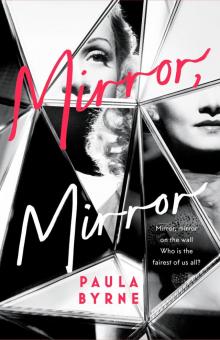 Mirror, Mirror
Mirror, Mirror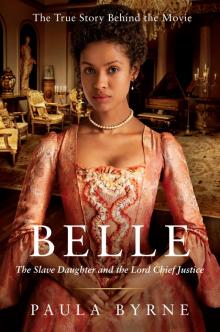 Belle
Belle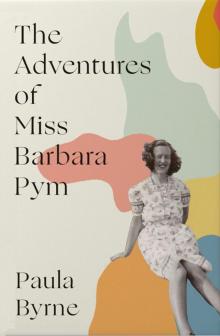 The Adventures of Miss Barbara Pym
The Adventures of Miss Barbara Pym The Real Jane Austen
The Real Jane Austen Look to Your Wife
Look to Your Wife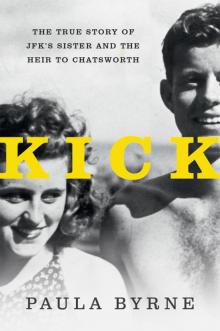 Kick
Kick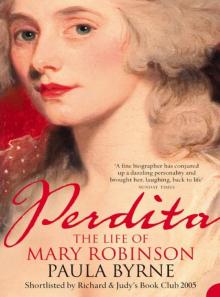 Perdita
Perdita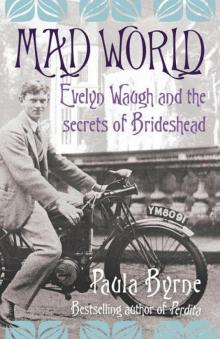 Mad World: Evelyn Waugh and the Secrets of Brideshead (TEXT ONLY)
Mad World: Evelyn Waugh and the Secrets of Brideshead (TEXT ONLY)